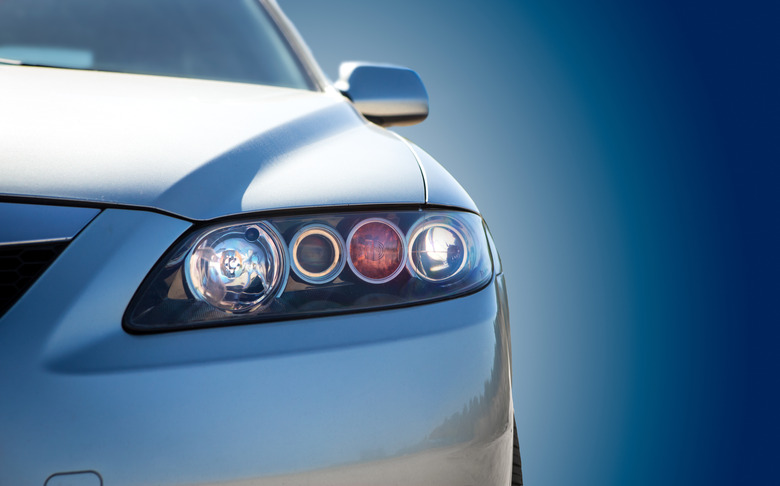Simple Uses Of Concave Mirrors
Concave mirrors are mirrors that curve inward. Used to focus light, they reflect it inward toward one focal point. Concave mirrors show different types of images, depending on the distance between the mirror and the object reflected. Concave mirrors are used quite frequently in day-to-day life.
Shaving and Makeup Mirrors
Shaving and Makeup Mirrors
Concave mirrors are often used as shaving mirrors and makeup mirrors. Objects held close are reflected in a concave mirror as a magnified image. When the mirror is held close to the face, an enlarged image of the skin can be seen. For shaving purposes, this allows you to see if any hair has been missed and to make sure that all hairs have been cut to the same length. For makeup purposes, it allows you to make sure all the skin on the face is covered and blended evenly.
Headlights
Headlights
Concave mirrors are used in motor vehicle headlights to send out strong beams of light. Instead of reflecting an image, they are used to focus the light from the bulb. Rays of light from the bulb are reflected off the concave mirror, creating a strong beam that shines on the road.
Microscopes
Microscopes
Near the base of a microscope, you may find a concave mirror mounted so it can be turned in any direction. Concave mirrors are used in microscopes to collect light from a lamp, shining it up onto a slide containing a specimen so it can be viewed through a magnification lens. It is important to never point the mirror toward the sun to collect light; the sunlight would be focused and could blind the person looking through the lens of the microscope.
Telescopes
Telescopes
Large telescopes traditionally have a concave mirror at one end. Similar to how a concave mirror works in a microscope, the concave mirror in the telescope collects light. Instead of shining the light up to a specimen, it shines the light from distant stars onto a flat mirror. The viewer looks through the lens on the eyepiece of the telescope and sees the reflection on the mirror, allowing a view of stars that the naked eye is unable to see.
Cite This Article
MLA
Aenne, Rachel. "Simple Uses Of Concave Mirrors" sciencing.com, https://www.sciencing.com/simple-uses-concave-mirrors-7298957/. 13 March 2018.
APA
Aenne, Rachel. (2018, March 13). Simple Uses Of Concave Mirrors. sciencing.com. Retrieved from https://www.sciencing.com/simple-uses-concave-mirrors-7298957/
Chicago
Aenne, Rachel. Simple Uses Of Concave Mirrors last modified March 24, 2022. https://www.sciencing.com/simple-uses-concave-mirrors-7298957/
